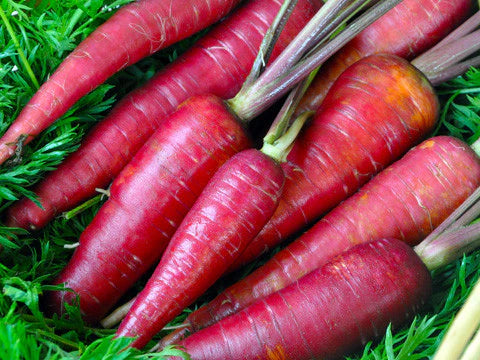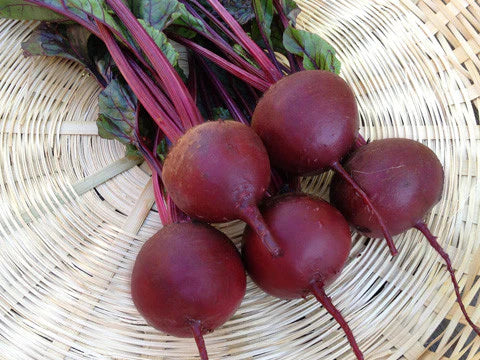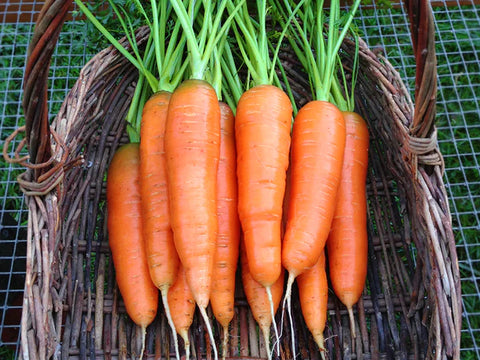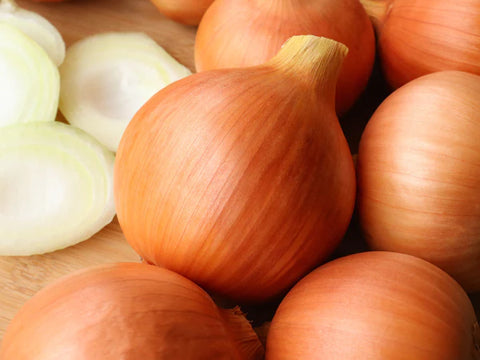Get Back to Your Roots! Roots are great fresh in the summer, but they also store well. Ever wonder how our ancestors ate fresh vegetables in the winter? Root crops! Root crops are nearly universal in the world’s cuisines. Without a doubt, our ancestors depended on roots – homage to the roots!
Roots have incredible storage and pickling qualities. For northern climates, they can provide us with fresh, homegrown veggies through the fall, winter and even into spring. Northern cuisines are rich with root crop dishes like soups - onions and carrots make the key ingredients in a soup base. Northern cuisines are also abundant in ferments/pickles - think sauerkraut and kimchi.
Pictured: Dragon Carrot (click for seeds)
Why Grow Roots?
- They’re fun – everyone loves colorful, buried treasures!
- They’re fast – radishes are ready in as little as 30 days!
- They’re colorful and nutritious!
- They take up little space & are great for smaller gardens.
- They are versatile in the kitchen.
- They’re great for storing and preserving (think pickled beets!)
Pictured: Yellowstone Carrot (click for seeds)
Tips for Growing Root Crops
Starting seeds:
- Sow most root crop seeds outside directly into garden soil:
- Sow spring radishes in April/May.
- Sow winter radishes in June or July.
- Sow carrots & beets May – July.
- Sow onions indoors in January or February
- Plant seeds at the right depth (see growing instructions on back of packet) - Make sure to keep seeds moist until germination
🌱 Soil:
Root crops prefer loose, fertile soil. Got clay? Add compost. Our Parisian carrot can handle tough clay soil! Don’t plant roots in soggy, poorly drained soils.
☀️ Light:
Ideally, you should plant roots in full sun. A general rule of thumb is that plants grown for a root or a fruit need full sun. However, some root crops can produce at the lower end of the “full sun” spectrum.
💧 Water:
Be sure to water your root crops if it doesn’t rain.
Storing Roots Root crops are easily stored in the fridge, cool basements, and root cellars. Be sure to keep them from freezing!
Pictured: Detroit Dark Red Beet (click for seeds)
Beets
- Beets store well in the fridge, in a plastic bag – add a paper towel to help prevent rotting.
- For root cellaring, pack beets in cedar shavings, sand, or leaves and monitor humidity.
- Make sure that they don’t freeze in storage.
- Beets are great pickled. Salt-brined pickles are easy and delicious. See recipes below.
Pictured: Scarlet Nantes Carrot (click for seeds)
Carrots
- Plant storage carrots around July 15th.
- Store them in a cool basement, fridge, or root cellar – be sure that they don’t freeze in storage!
- Try storing carrots in the garden. Just before a hard frost, simply place hay/straw bales on top of carrots - you can keep harvesting them throughout the winter (you may want to protect your carrots against voles - we use Plantskydd Vole Repellent)
- Carrots can also be pickled – see recipes below.
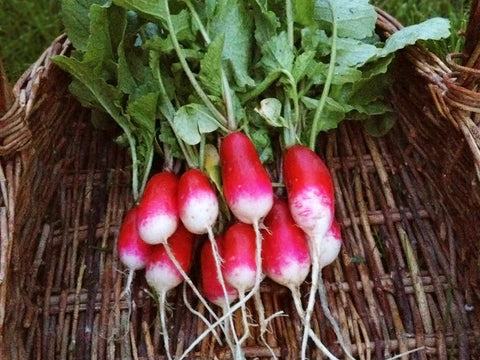
Pictured: French Breakfast Radish (click for seeds)
Radishes
- “Spring” radishes (such as Holmes Royal Red or French Breakfast) are fabulous fresh but also make great radish pickles.
- The natural, salt-brine fermenting process removes spice, preserves crunch, and creates new and interesting flavors.
- Radish pickles made in July can store in the fridge through March! (see Pickled Roots recipe below)
- “Winter” (i.e. storage) radishes can store all winter long.
- Watermelon and Green Luobo make great storage radishes and also great radish pickles. Store them like beets and carrots.
Pictured: Clear Dawn Onion (click for seeds)
Onions
- Grow storage-type onions (which will store until April if stored properly). Clear Dawn onion is a fantastic storage onion.
- Cure onions for 2-4 weeks in a warm, dry, well-ventilated area.
- To cure, place onions in burlap/paper sacks, hang them, or spread them out in a single layer onto an open surface.
- Once cured, store in breathable bags in a cool basement, refrigerator, or root cellar.
- Ideal storage temperature: 32-50⁰F.
- Ideal humidity: 60-70%
Root Recipes
Don’t know what to do with radishes, beets or other roots? Root crops are versatile in the kitchen. Here are some examples of how you can use root vegetables after the harvest! In general, most root vegetables can be eaten raw, steamed, sautéed, baked, roasted, stir fried, or fried.

